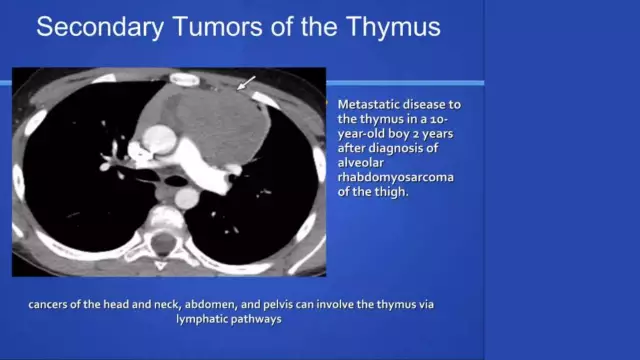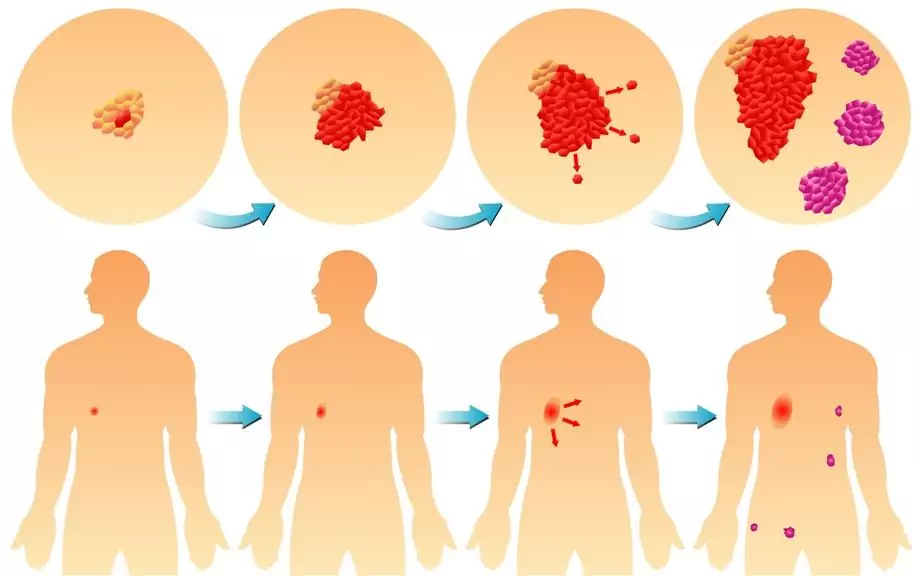- Author Rachel Wainwright [email protected].
- Public 2023-12-15 07:39.
- Last modified 2025-11-02 20:14.
Malignant tumors of the female reproductive system
Cancers of the female reproductive system include cervical cancer, breast cancer, ovarian cancer, uterine cancer (endometrial cancer), vaginal cancer, vulvar cancer, and fallopian tube cancer. All these diseases are very heterogeneous, each of the listed units includes several subspecies. Common to all these pathologies is that without treatment, all these tumors are fatal. A gynecologist-oncologist is engaged in the diagnosis and treatment of the above diseases.

Some statistics
In the overall cancer incidence, malignant tumors of the female reproductive system account for 10 to 17%, approximately 35% are detected at a late stage. The most common is breast cancer. It also ranks first among the causes of female mortality in the 40-50 age group. In second place is cervical cancer.
The average mortality rate during the period of the year from diagnosis in Russia is about 20%. This means that within the first year after the discovery of the disease, every fifth woman dies. This indicator is called a reflection of how preventive work is done, because death from cancer within a year from the moment of diagnosis means that the patient sought help at a late stage. 20% is by no means an optimistic figure.
Malignant tumors of the female reproductive system
Some of the tumor diseases of the female genital area are rare, for example, vaginal and fallopian tube cancers, others are very common, such as breast and cervical cancer. Let's talk about the three most common.
Breast cancer (BC)
One of the three most frequent in the world. It is most common in the 65+ age group, but it also occurs in very young women, up to 30 years old. One of the most studied types of cancer. Genes have been identified whose defect significantly increases the risk of the disease, but they are responsible only for some types of breast cancer.
The tumor develops for a long time, without showing itself. Most often it is found either on a preventive mammography, or by the woman herself, who pays attention to a seal in one of the mammary glands. At a later stage, breast cancer takes the form of a tumor node, towering above the level of the skin, or a disintegrating ulcer.
Combined treatment, usually the removal of the affected gland with some adjacent tissues and chemotherapy. Depending on the subspecies, hormone therapy, radiation, and targeted therapy can be used.
Cervical cancer (cervical cancer)
It is more common in the 35-65 age group. The main reason is infection with oncogenic strains of papillomavirus, sexually transmitted infections. Vaccines have been developed to help avoid infection, but vaccination is effective only for girls who have not begun to have sex.
In the early stages, it is asymptomatic, later there are bloody discharge from the genital tract, discomfort in the lower abdomen, soreness and bleeding during and after intercourse.
The main method of detection is a cytological test, or Papanicolaou test, a smear from the cervix with subsequent examination in the laboratory. This simple, inexpensive and painless method made it possible to detect cervical cancer at the preclinical stage, thereby reducing mortality from it tenfold.
Treatment usually consists of removing the uterus along with the cervix and sometimes the appendages. It can be supplemented with chemotherapy, radiation and targeted therapy.

Ovarian cancer (OC)
Differs in high mortality due to the fact that more than 75% of cases are detected at a late stage. Most of the cases are women after 60 years.
Symptoms are scanty and nonspecific, most often they are unexpressed pulling pains in the lower abdomen, not different from those that occur with inflammation of the ovary. Spreading in the tissues of the abdominal cavity, the tumor leads to the accumulation of fluid in it - ascites develops. Outwardly, it manifests itself as an increase in the abdomen, but even in this case, the symptom is not always noticed.
Treatment consists of removing the affected ovary and chemotherapy. In some cases, both ovaries are removed along with the uterus and omentum.
This type of tumor is characterized by high malignancy - even after successful treatment, relapse occurs in 80% of cases.
Early diagnosis: preventive examinations
It is still widely believed that cancer is incurable, and therefore for many patients this diagnosis sounds like a verdict. This opinion is not just wrong, it carries serious risks - often women, fearing to hear the diagnosis, postpone the visit to the doctor until the last. In fact, almost all types of cancer are already curable if the tumor is caught at an early stage, so timely diagnosis is extremely important. The problem is that the initial stages of tumor diseases are asymptomatic, the appearance of the first symptoms is often associated with an advanced tumor process. The solution to the problem is preventive examinations. It is with the introduction of screening and the explanation of its necessity that a sharp decrease in the number of deaths from cancer in the countries of the Western world is associated.
A gynecological preventive examination includes an examination by a gynecologist of the external genital organs, a visual examination of the vagina and cervix, and a PAP test. Sometimes colposcopy is additionally prescribed (examination of the vagina and cervix with a colposcope) and ultrasound of the pelvic organs. Mammological examination consists of a physical examination of the mammary glands and a mammogram. You can undergo a preventive examination by a qualified specialist in St. Petersburg, in the Narvskaya clinic.
How often does a woman need to undergo a preventive examination? It depends on whether she is identified in the risk group for cancer. If not, then once every 2 years is enough. If a woman is at risk, the doctor may recommend that she be seen once a year or even more often, depending on the level of risk.
It is important to remember that regular preventive examinations with a gynecologist and mammologist can save your life.
Found a mistake in the text? Select it and press Ctrl + Enter.






